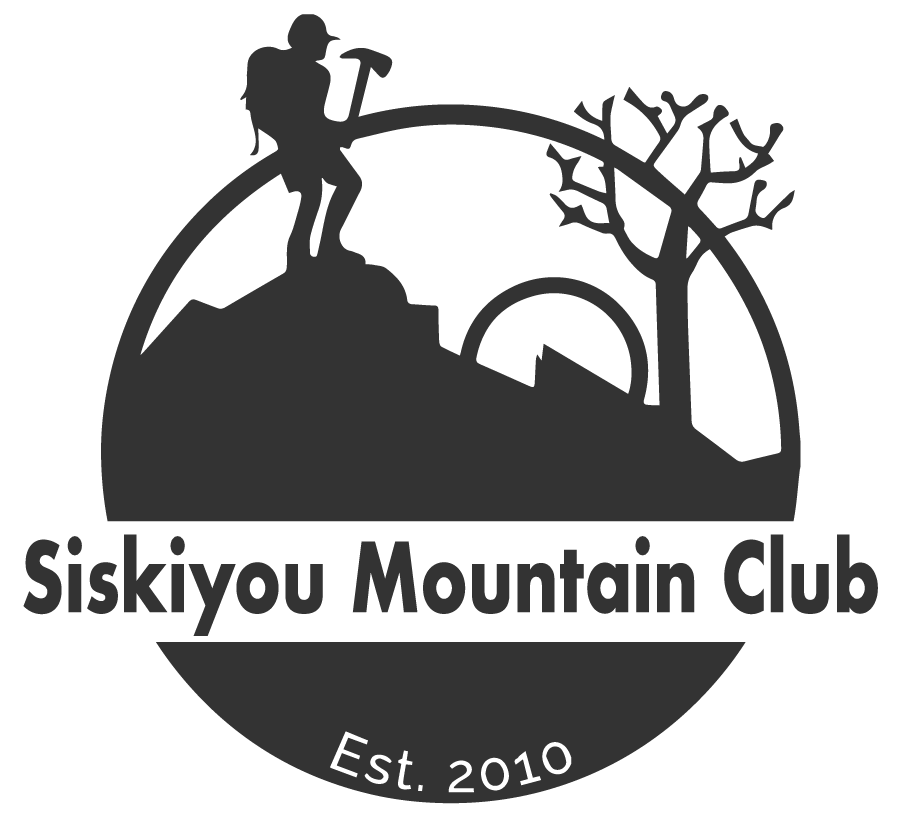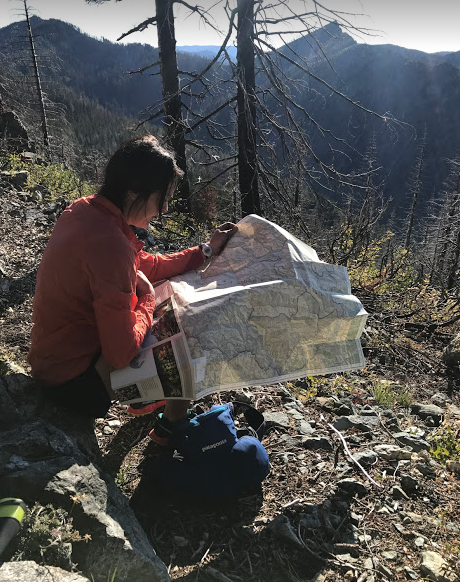| SMC co-founder Jill Stokes, Wild-Rogue Wilderness area |
In 2005, my wife, Jill, and I were summer caretakers at a historic BLM site called the Rogue River Ranch. Its backdrop was the Wild & Scenic Rogue River and the Wild Rogue Wilderness area.
 |
| The map that started it all |
By way of the Kalmiopsis and Wild Rogue Wilderness map, I located and found destinations most wild: old mine-shafts and sawmills, ancient tree groves, mazes of old trails, and paradise waters.
One day I was studying the Wild Rogue map, and flipped it over. There it was, the Kalmiopsis. From that moment, nothing but its deep recesses would satiate my appetite for wild adventure.
At 180,000-acres, it dwarfed the 38,000-acre Rogue wilderness. Its boundary was shaped like a tear drop which encompassed a free-running watershed, the Chetco. Crowded contour lines represented the sharp ridges and canyons I would later seek.
“Are you still reading that map?” Jill asked me later that summer. I had become enthralled and obsessed with it. I still am.
But In 2006 when Jill and I embarked on our first Kalmiopsis journey, I would be let down and frustrated, because the trails on that map were gone. They’d been smashed by the 2002 Biscuit Fire’s aftermath. Dead trees filled the routes I’d planned, rendering them impassable, and we got lost.
| Section of trail in Kalmiopsis completely covered by deadfall |
We expected some wilderness fairytale from the cover of a magazine. What we got was slapped in the face with a lesson in self reliance.
But in those moments of despair, we overcame fear and found something far greater than just our way home: we found for the first time an adventure entirely authentic, uninsulated, unadulterated and completely uncontrolled. We found 180,000 acres of total freedom.
As romantic that may sound, it wasn’t, and we left quite angry. Why had nobody fixed the trails? And why had nobody warned us that the trails wouldn’t even be there?
In 2007 I went to New Hampshire to work for the Appalachian Mountain Club in the White Mountain Forest. There, I met hikers who loved the wilderness so much that they would volunteer to maintain trails. I became impressed by how much work they got done, and inspired by their commitment.
I returned to Oregon and started talking talking about bringing volunteers into the Kalmiopsis, like the AMC brought volunteers into their wilderness. In 2008, Jill and I moved to southern Oregon, and the rest is history. It took a lot of planning and persistence, but by 2010 we were running volunteer crews in the Kalmiopsis.
| SMC co-founders Jill Stokes and Gabe Howe |
So, really, the SMC was just the outcome of converging experiences.
I found in the Kalmiopsis a place that was special and wild yet damaged, I saw in New Hampshire the model to fix it, and I set off into the wilderness with some tools, a few volunteers and a whole lot of gumption. But it all started with that map.


